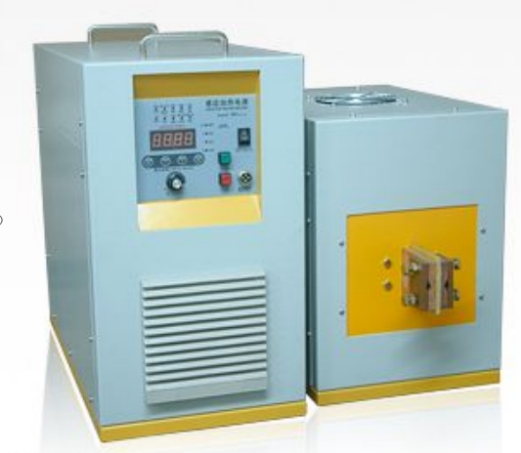- 17
- Oct
Skillnaden mellan högfrekvent släckning och mellanfrekvenskylning
Skillnaden mellan högfrekvent släckning and intermediate frequency quenching
1. Vad är induktionshärdning
Most high-frequency quenching is used for surface quenching of industrial metal parts. It is a metal heat treatment method that generates a certain induction current on the surface of the workpiece, rapidly heats the surface of the part, and then quenches it quickly.
För det andra, vad är mellanfrekvenssläckning
Intermediate frequency quenching is to put metal parts in an induction coil, the induction coil is energized to generate an alternating electromagnetic field, and an alternating current is induced in the metal part. Due to the skin effect, the current is mainly concentrated on the surface of the metal part, so the surface temperature The highest is the water spray cooling or other cooling immediately below the induction coil. Since the heating and cooling are mainly concentrated on the surface, the surface modification is obvious, while the internal modification is basically not, and it can have a very special heat treatment effect.
Three, the difference between high-frequency quenching and medium-frequency quenching
Högfrekvent släckning och medelfrekvent släckning är båda en slags ytvärmebehandlingsteknik. De använder båda högfrekvent (eller medelfrekvent, effektfrekvent) induktionsström för att snabbt värma upp ytan på ståldelar och sedan omedelbart kyla ner den.
Arbetsprincipen för högfrekvent härdning är densamma som medelfrekvenshärdning, vilket är principen för induktionsvärme: det vill säga arbetsstycket placeras i induktorn, som i allmänhet är ett ihåligt kopparrör med medelhög frekvens eller högfrekvent växelström (1000-300000Hz eller högre). Det växlande magnetfältet genererar en inducerad ström med samma frekvens i arbetsstycket. Fördelningen av denna inducerade ström på arbetsstycket är ojämn. Det är starkt på ytan men svagt på insidan. Det är nära 0 till kärnan. Använd denna hudeffekt, arbetsstyckets yta kan värmas snabbt och yttemperaturen stiger till 800-1000 ℃ inom några sekunder, medan temperaturen i kärnan kommer att öka mycket lite
Under uppvärmningsprocessen är emellertid fördelningen av den inducerade strömmen i arbetsstycket inte enhetlig och värmeeffekten som produceras av olika strömfrekvenser är också olika:
1. Högfrekvent släckning
Strömfrekvensen är 100 ~ 500 kHz
Shallow hardened layer (1.5~2mm)
Hög hårdhet
Arbetsstycket är inte lätt att oxidera
Liten deformation
Bra släckkvalitet
hög produktivitet
Suitable for parts that work under friction conditions, such as generally small gears and shafts (the materials used are 45# steel, 40Cr)
2. Mellanfrekvenssläckning
Strömfrekvensen är 500 ~ 10000 Hz
Djupt härdat lager (3 ~ 5 mm)
Lämplig för delar som utsätts för vridning och tryckbelastning, till exempel vevaxlar, stora kugghjul, slipmaskinspindlar etc. (Materialen som används är 45 stål, 40Cr, 9Mn2V och duktila
In short, the biggest difference between high frequency quenching and intermediate frequency quenching is the difference in heating thickness. High frequency quenching can harden the surface in a short time. The crystal structure is very fine and the structural deformation is small. The intermediate frequency surface stress is smaller than that of high frequency. .

